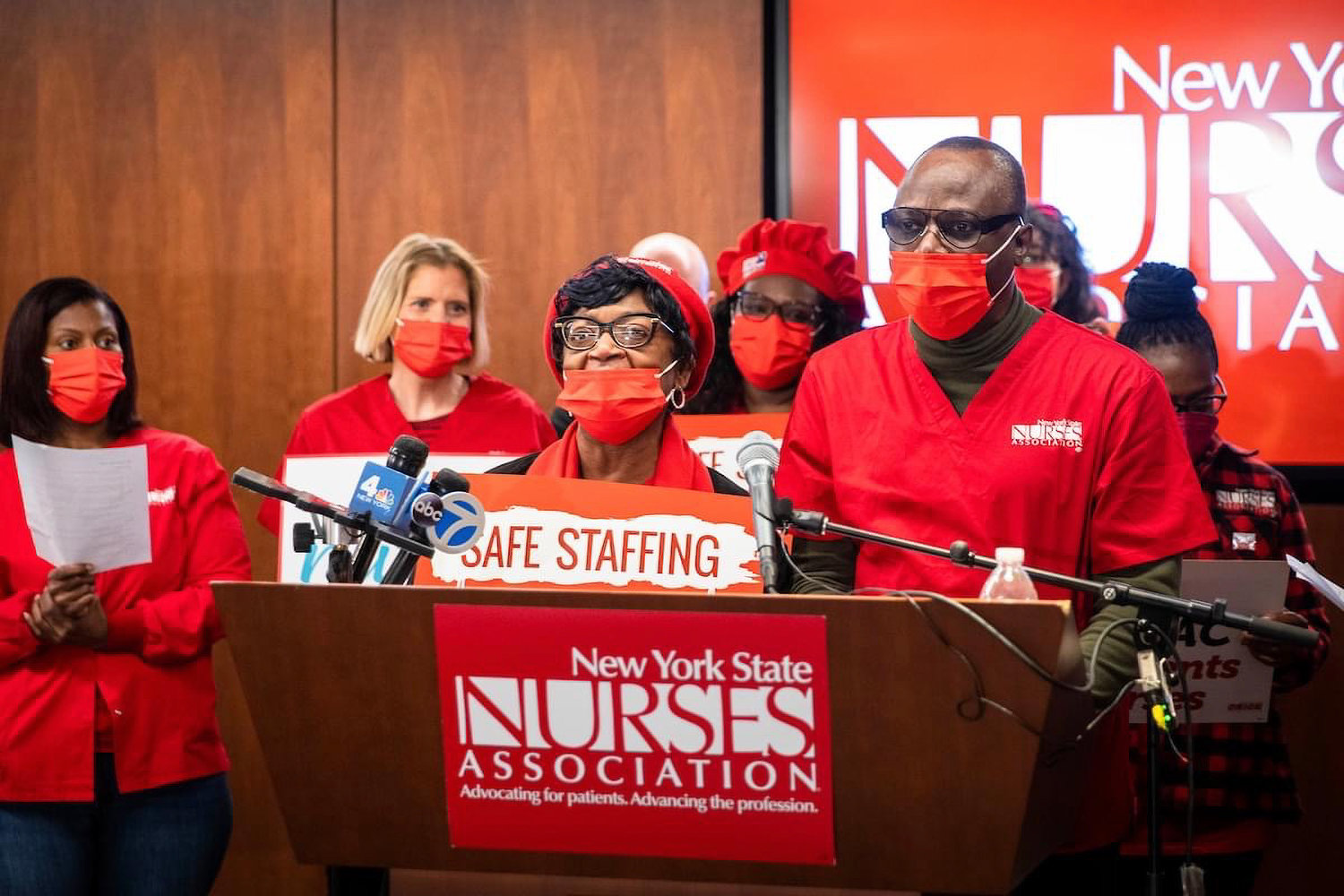Nurses set to strike on Jan. 9
Union delivers 10-day notice, will walk if contract not signed
Benny Mathew, a registered nurse at Montefiore Medical Center, cares for 20 patients in the emergency room. After months of negotiations, he voted in favor of a nurses’ strike, which is expected to make history as the largest in the United States.
About 16,000 others will join him from hospitals around the five boroughs, including Mount Sinai, Mount Sinai Morningside-West, Maimondes, BronxCare, Richmond University Medical Center and Flushing Hospital. According to the Associated Press, the union representing 4,000 nurses at New York-Presbyterian Hospital reached an agreement Jan. 2, pending a ratification by the rank and file.
A Dec. 31 press release stated that the 10-day strike notice gives the hospital time to plan for patient care while nurses go on strike. The New York State Nurses Association is pushing for safe staffing, better wages and maintaining proper health insurance coverage.
“Nurses go into this profession to help people.,” Mathew said. “That’s why NYSNA nurses put forward many community proposals to assess and meet community health needs. Montefiore has refused to seriously engage in bargaining over these issues.”
With all the hours he works, he says it is hard to say how patient outcomes will turn out, especially if he is working multiple shifts or has too many patients. It can lead to errors, fatigue, and burnout.
An unfavorable outcome can lead to anxiety and increased stress. With high work hours, it is hard for nurses to maintain a healthy personal lifestyle and family obligations.
Prior to the pandemic, NYU offered full scholarships for its nursing students in hopes of pursuing a career in the medical field. Unfortunately, about two years later those students had to step in to help their colleagues during COVID-19.
That phenomenon frightened medical students from continuing their medical career. Now, two-thirds of nurses across the country say they are planning to leave the profession in the next two years. They are at a breaking point.
The Journal of the American Medical Association says safe staffing levels save lives. Hospitals that have a 1:8 nurse-to-patient ratio experience five additional deaths per 1,000 patients than those with a 1:4 nurse-to-patient ratio.
The death of a patient increases by 7 percent for each patient a nurse takes. A study by Dr. Linda Aiken, a registered nurse and researcher who is the director for the Center for Health Outcomes and Policy Research, found that if New York state hospitals implemented safe staffing, there may have been 4,370 prevented deaths in the last two years among Medicare patients.
“My patients in the Bronx look like me, live in the same community I do, and most of them are like family. Our patients deserve the best possible care regardless of their income or race. But nurses can only do so much when we are taking care of 10 or more patients at once,” said Flandersia Jones, registered nurse at BronxCare.
“Instead of investing in our community, Montefiore has refused to do what it takes to hire and retain enough nurses,” said Michelle Gonzalez, a registered nurse at Montefiore.
The hospital is cutting primary care services and is planning to shut down the Nurse-Family Partnership — a lifeline for high-risk pregnant mothers and their babies, Gonzalez explained.
“Nurses are fighting to protect our patients — and we can’t do that without safe staffing,” she said.
A bill that was passed by Congress cited inadequate and poorly monitored registered nurse staffing result in fewer staff and jeopardizes the quality of health care services.
Within that bill, it clearly states the number of patients a nurse would not be allowed to have under care, depending on circumstances such as trauma and emergencies.
“But some NYC hospitals have been jacking up fees for health care services, meaning they’re profiting from getting nurses sick, and now they don’t want to pay the bill,” Mathew said.
While nurses were known to be frontline heroes during COVID, there has been staff burnout. To make matters worse, in 2022 the flu and RSV cases rose in New York.
Mathew explained that the nurses who needed treatment often turned to their own hospital for care. Yet, at the same time, hospital executives were making a profit off their illness, at least $73 million in bonuses in 2020, including multi-million-dollar annual salaries.






